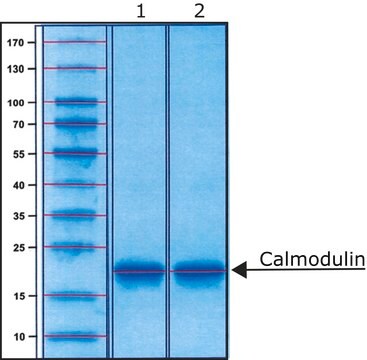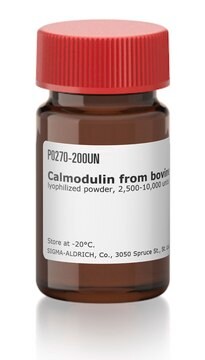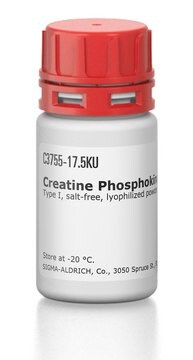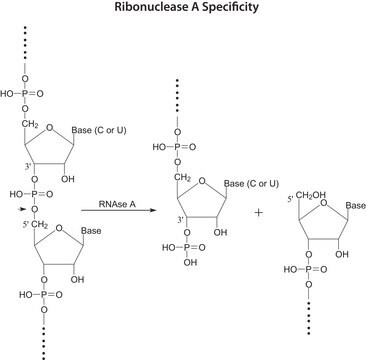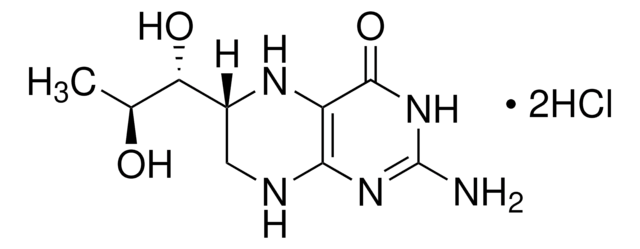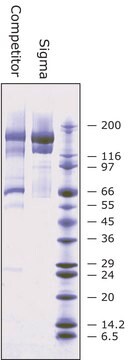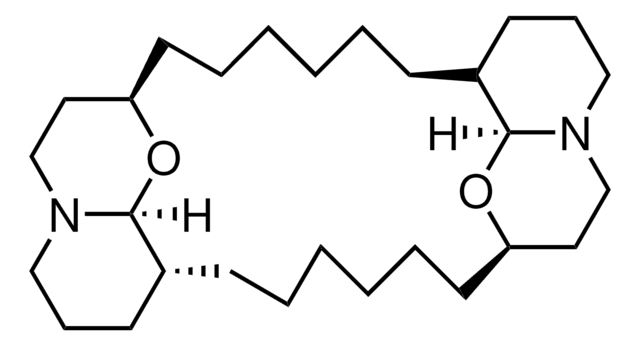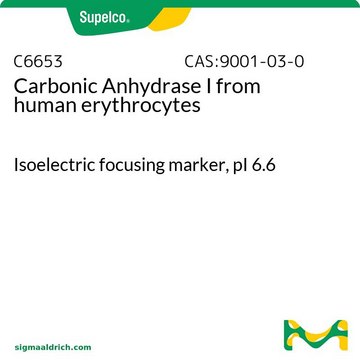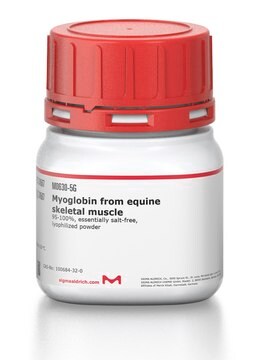P1431
Calmodulin from bovine testes
BioUltra, ≥98% (SDS-PAGE), lyophilized powder, essentially salt free
Sinônimo(s):
CaM, Phosphodiesterase 3′:5′-cyclic nucleotide activator
About This Item
Produtos recomendados
fonte biológica
bovine testis
Nível de qualidade
linha de produto
BioUltra
Ensaio
≥98% (SDS-PAGE)
forma
lyophilized powder
peso molecular
16.79 kDa
condição de armazenamento
(Keep container tightly closed in a dry and well-ventilated place)
técnica(s)
ligand binding assay: suitable
Impurezas
salt, essentially free
nº de adesão UniProt
aplicação(ões)
cell analysis
temperatura de armazenamento
−20°C
Informações sobre genes
cow ... CALM3(520277)
Procurando produtos similares? Visita Guia de comparação de produtos
Categorias relacionadas
Descrição geral
Calmodulin (CaM) is a Ca2+-sensor protein containing four EF-hand motifs that bind to four Ca2+ ions. It is found ubiquitously in all eukaryotes.
Aplicação
- as a component of the reaction mixture in PhosphoSens assay to measure Ca2+/calmodulin-dependent protein kinase II α (CaMKIIα) substrate phosphorylation
- to generate standard curve for the determination of in situ calmodulin concentration in tissues
- as a ligand in radio-ligand binding for studying calmodulin affinity
Ações bioquímicas/fisiológicas
anticorpo
produto relacionado
Código de classe de armazenamento
11 - Combustible Solids
Classe de risco de água (WGK)
WGK 3
Ponto de fulgor (°F)
Not applicable
Ponto de fulgor (°C)
Not applicable
Equipamento de proteção individual
Eyeshields, Gloves, type N95 (US)
Certificados de análise (COA)
Busque Certificados de análise (COA) digitando o Número do Lote do produto. Os números de lote e remessa podem ser encontrados no rótulo de um produto após a palavra “Lot” ou “Batch”.
Já possui este produto?
Encontre a documentação dos produtos que você adquiriu recentemente na biblioteca de documentos.
Os clientes também visualizaram
Nossa equipe de cientistas tem experiência em todas as áreas de pesquisa, incluindo Life Sciences, ciência de materiais, síntese química, cromatografia, química analítica e muitas outras.
Entre em contato com a assistência técnica